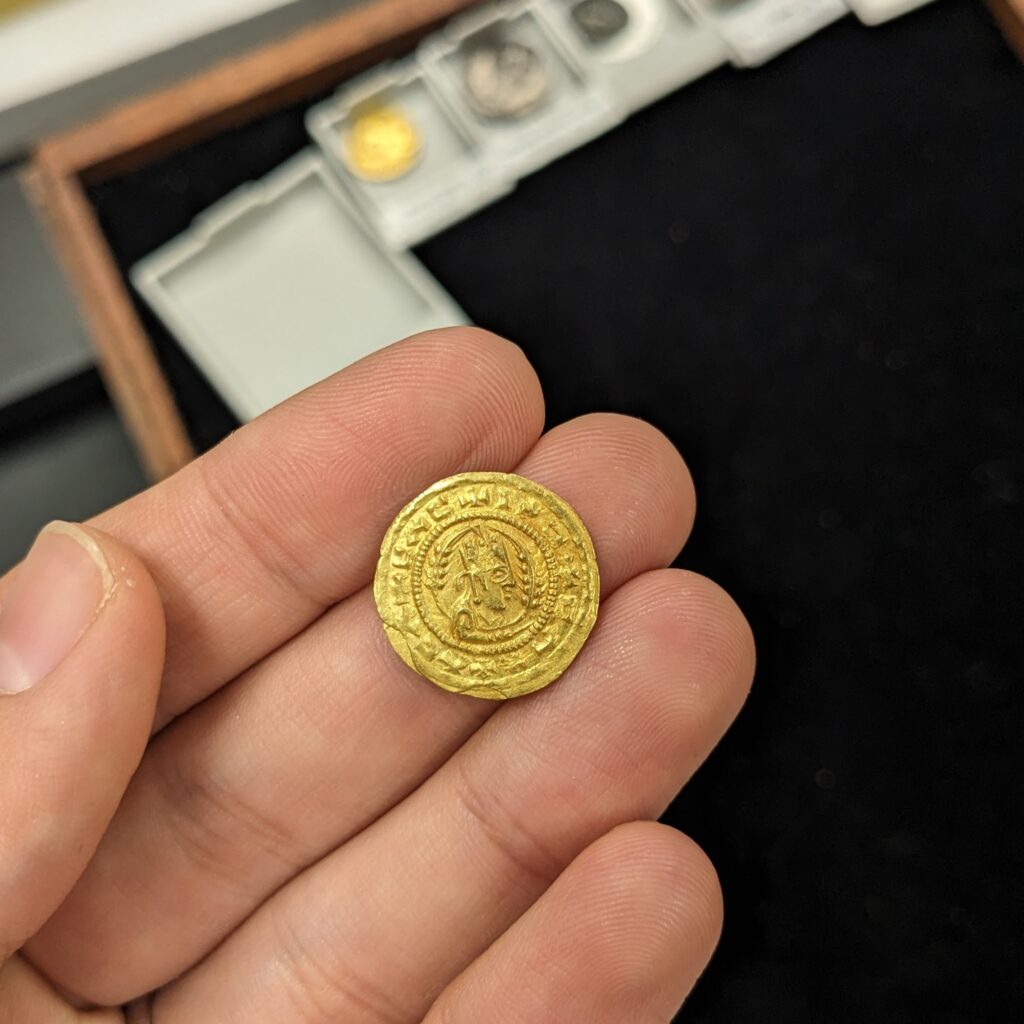Students at Princeton are fortunate to have access to one of the largest collections of coins anywhere in the United States. Made up of roughly 115,000 items, the collection includes coins, paper money, medals, and other tokens covering almost the entire history of human money— in fact, the university has coins minted in the 6th century BC by Croesus, who is credited with inventing the first system of gold and silver currency. The university’s collection serves many purposes. For example, you may have been in a class which has gone down to Firestone C Floor to look at coins from the time and place you were studying. The coins are also used for exhibitions and workshops. I’m writing here to explain to you how you can use these coins to do great research.

Yours truly holding a 1500 year-old coin in Firestone Library
Coins are often small and unassuming, but they hold within themselves great possibilities for study and analysis. One aspect about coins which stands out in particular is their versatility. The study of coins— also called numismatics— is relevant to many fields of study. You can analyze coins from an art historical lens by looking at how figures are depicted on different coins. Coins are important for economic history, and can tell us a lot about commerce, inflation, and economic events of the past. In many cases, coins are the only evidence that we have for a ruler’s existence— many old Ethiopian kings, for example, are known mainly from their coinage. Coins often also have religious expressions and motifs on them, and so are relevant to the study of religion. Because of their durability and widespread circulation, coins can provide us with a unique view of the past which no other medium provides.
I myself have used coins from the coin collection for research papers. I remember being struck by one particular Islamic coin from early-8th century Jerusalem. I saw it when I visited Special Collections with my class for a presentation on the history of coinage in the Eastern Mediterranean. On one side of the coin was the Arabic phrase “Muhammad is the prophet of God.” On the other side, to my surprise, was a menorah. I was amazed by this juxtaposition of an Islamic religious slogan with a religious symbol which I closely associated with Judaism. I did more research and found that scholars before me had been similarly confused by this type of coin, which has challenged the way that researchers in the present day think about the relationship between early Islam and Judaism. I ended up writing a research paper about the history of this coin and its reception among Jewish and Muslim scholars in the present day.
The numismatic collection in Firestone Library is an excellent resource for undergraduate students interested in research. I must admit that I am a little biased— I’ve worked in the coin collection cataloging early Islamic coins for the past couple years— but I think that any humanities students interested in research of all sorts would do well to take a look at the numismatics catalog and see what they find. If you want to look at coins in person, the process is similar to that for looking at manuscripts and other items in the Princeton special collections. If you are interested in anything from ancient Persia to modern America, you might benefit from looking further into the Princeton coin collection and incorporating this wonderful resource into your research.
– Shane Patrick ’24, Humanities Correspondent

